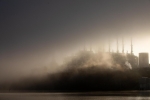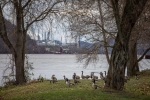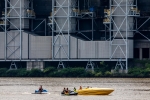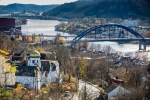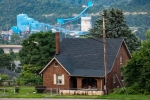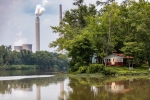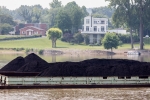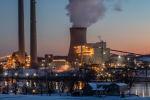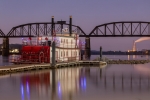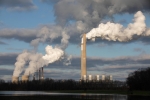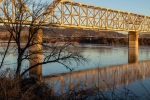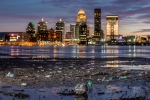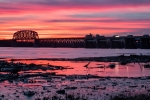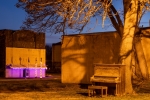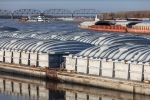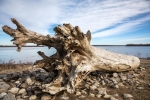The Ohio River is formed from the confluence of the Monongahela and the Allegheny Rivers in Pittsburgh. Called The Forks by the British who won the territory in the French and Indian War in 1758, the Ohio’s origin is at the widest part of the world’s largest coal bed. Coal and a river that moved the coal created the conditions that allowed the region to grow into an industrial powerhouse. With ready access to vast amounts of coal, the steel industry prospered here and produced the materials to build infrastructure for the entire country. The river transported the coal and the steel and provided a way to cool the tremendous amount of heat generated by the processes used to make coke, steel, and electricity. Over 20 locks and dams were built to control the river, to facilitate navigation and prevent flooding. And then technology changed and the industries driving the prosperity of this region collapsed. The Ohio is quieter now but its history and future are still at the heart of the momentous dilemmas we face as a country.
In the summer of 2021, I drove along the Ohio from Pittsburgh to Marietta. The air quality was terrible. After a few days, I learned the haze was smoke from fires in Oregon. Climate change has increased the wildfires in the West. Climate change was literally visible in each picture I took. Each breath reminded me of the urgent need to reduce the amount of CO2 in the air. And yet, what I saw all-around me was coal. You can see the piles of coal in train cars, on barges, in the yards around power plants. I also saw the boarded up stores and collapsing abandoned houses in towns from Clairton, PA to Bellaire, OH. As the US shifted to imported steel and coal lost its primacy to natural gas as the fuel source for electricity generation, plants along the Ohio River closed and unemployment rose. When and if the remaining coal mines and power plants are shuttered as they must be if the worst of climate change is to be avoided, the economic devastation faced by these communities will only get worse. Along the Ohio, the dilemma of how to balance the pain of economic dislocation with the dire need to avoid the worst consequences of climate change will play out over the coming decade.

